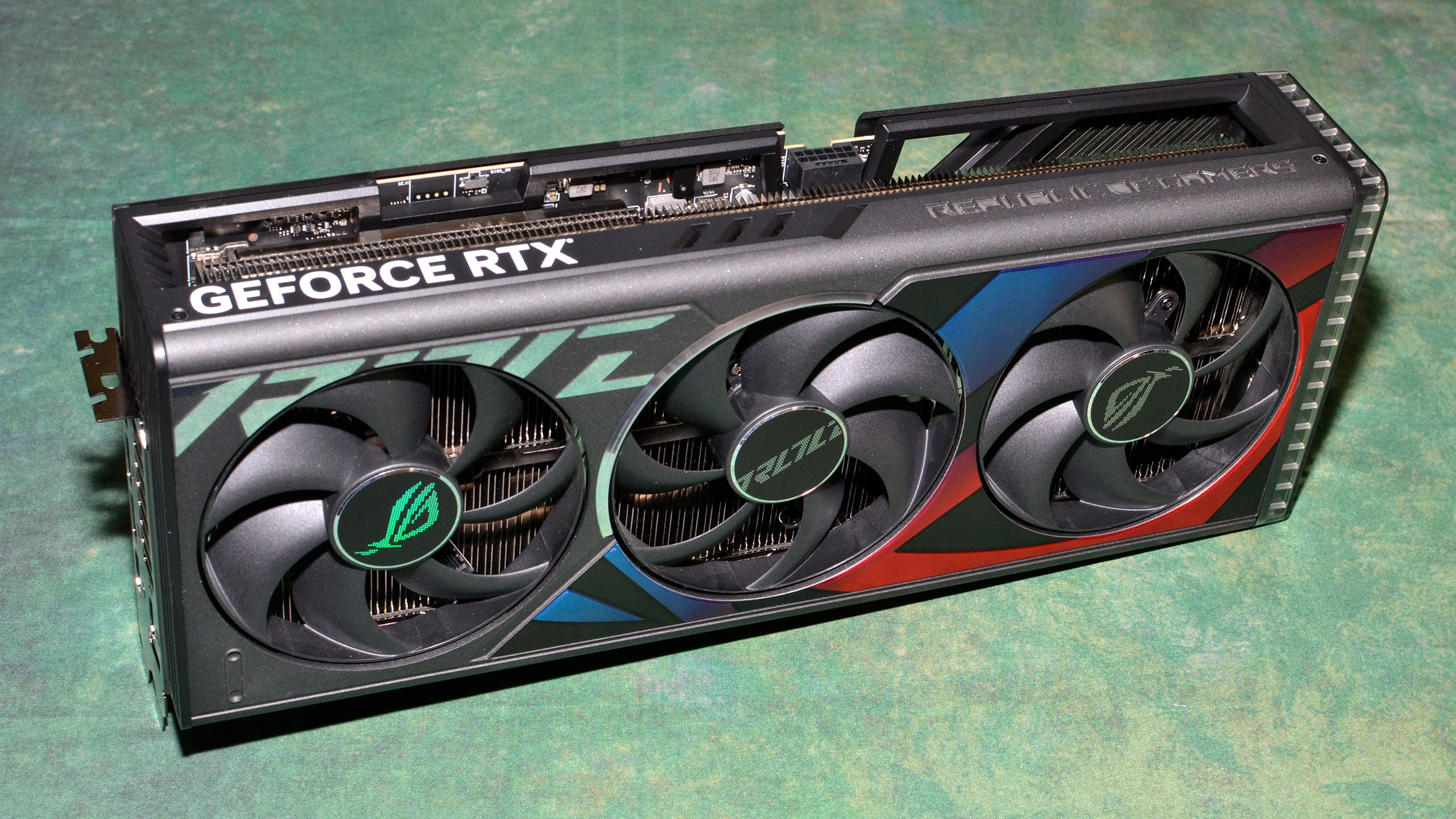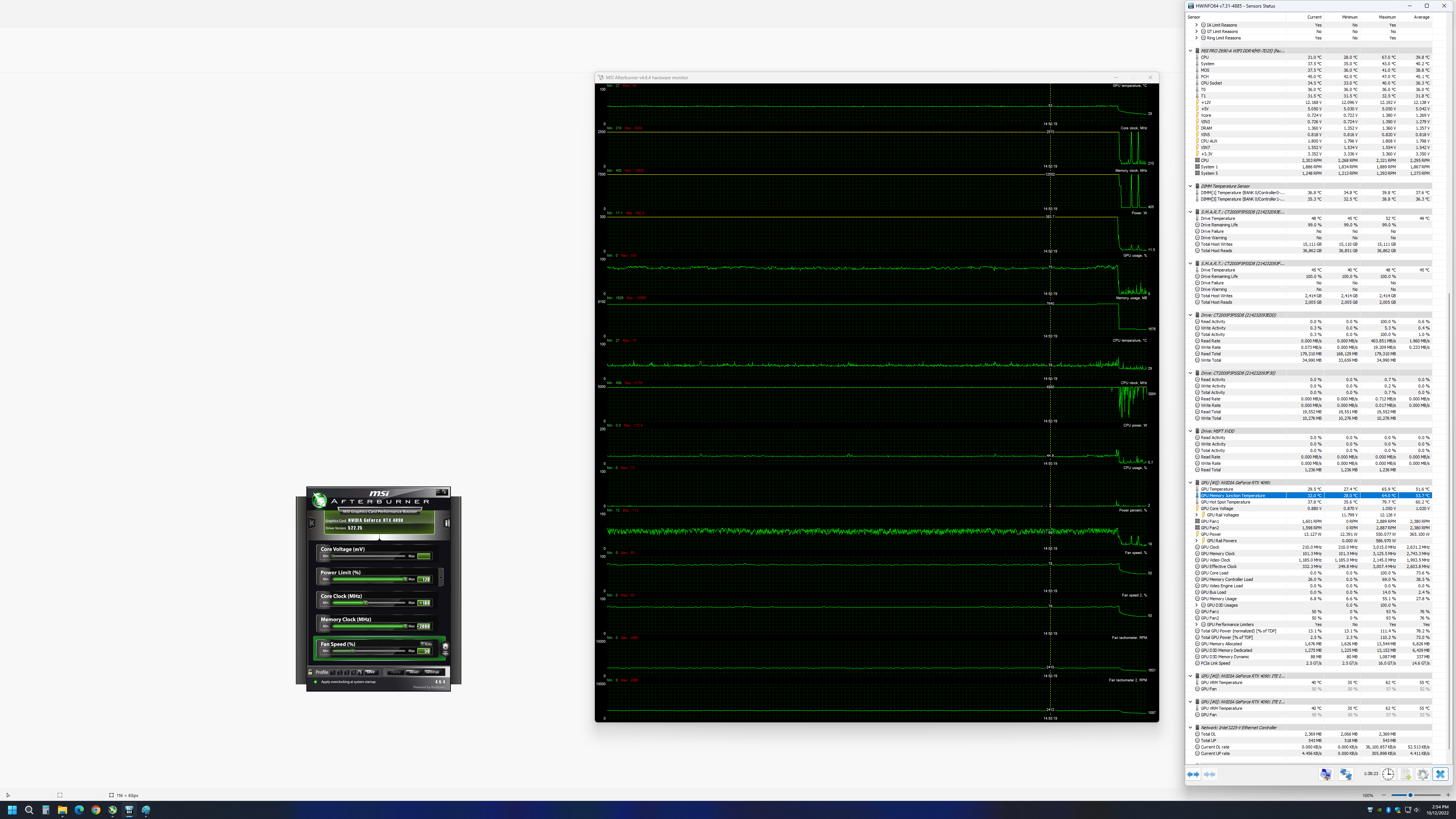Why you can trust Tom's Hardware
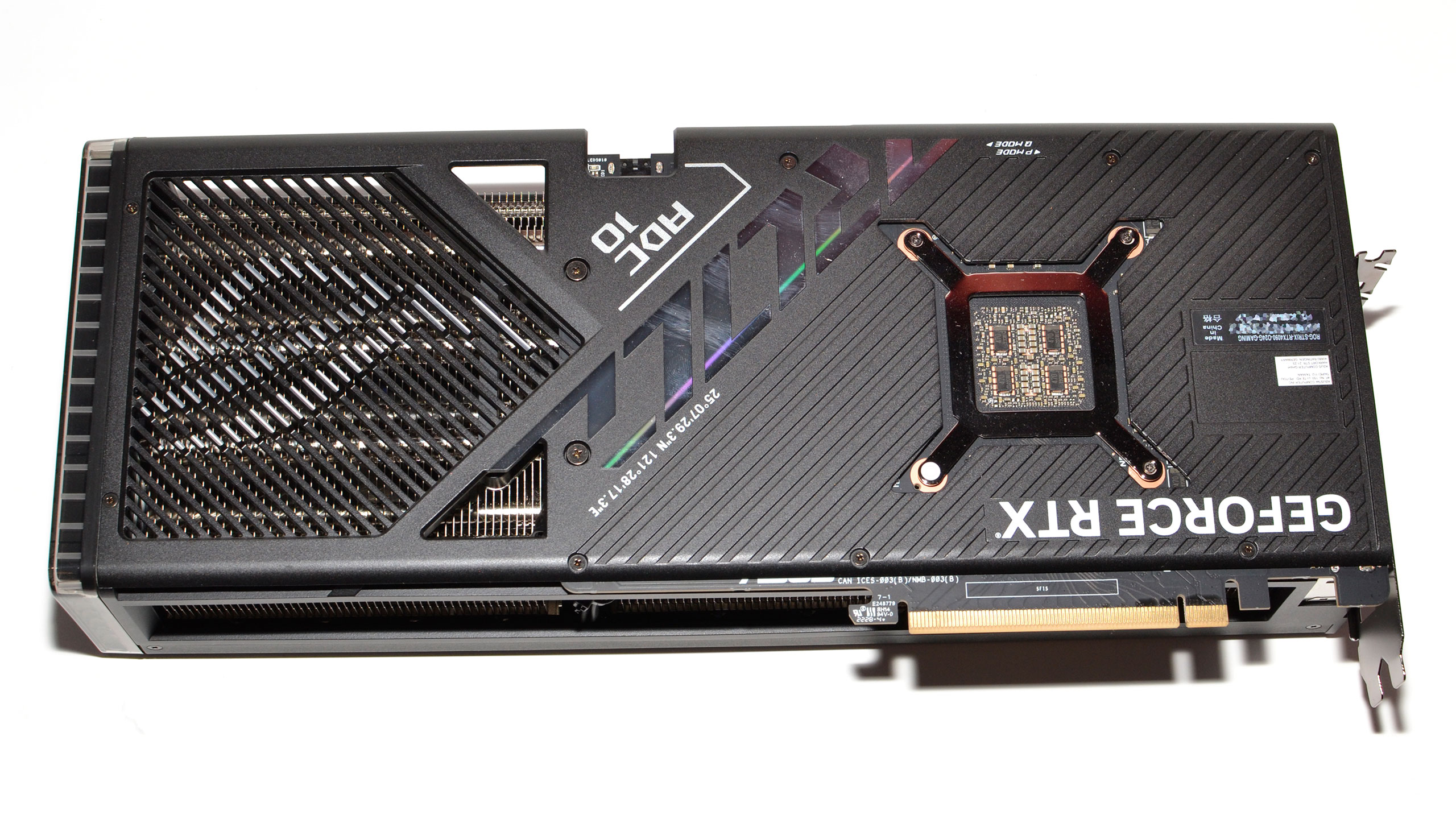


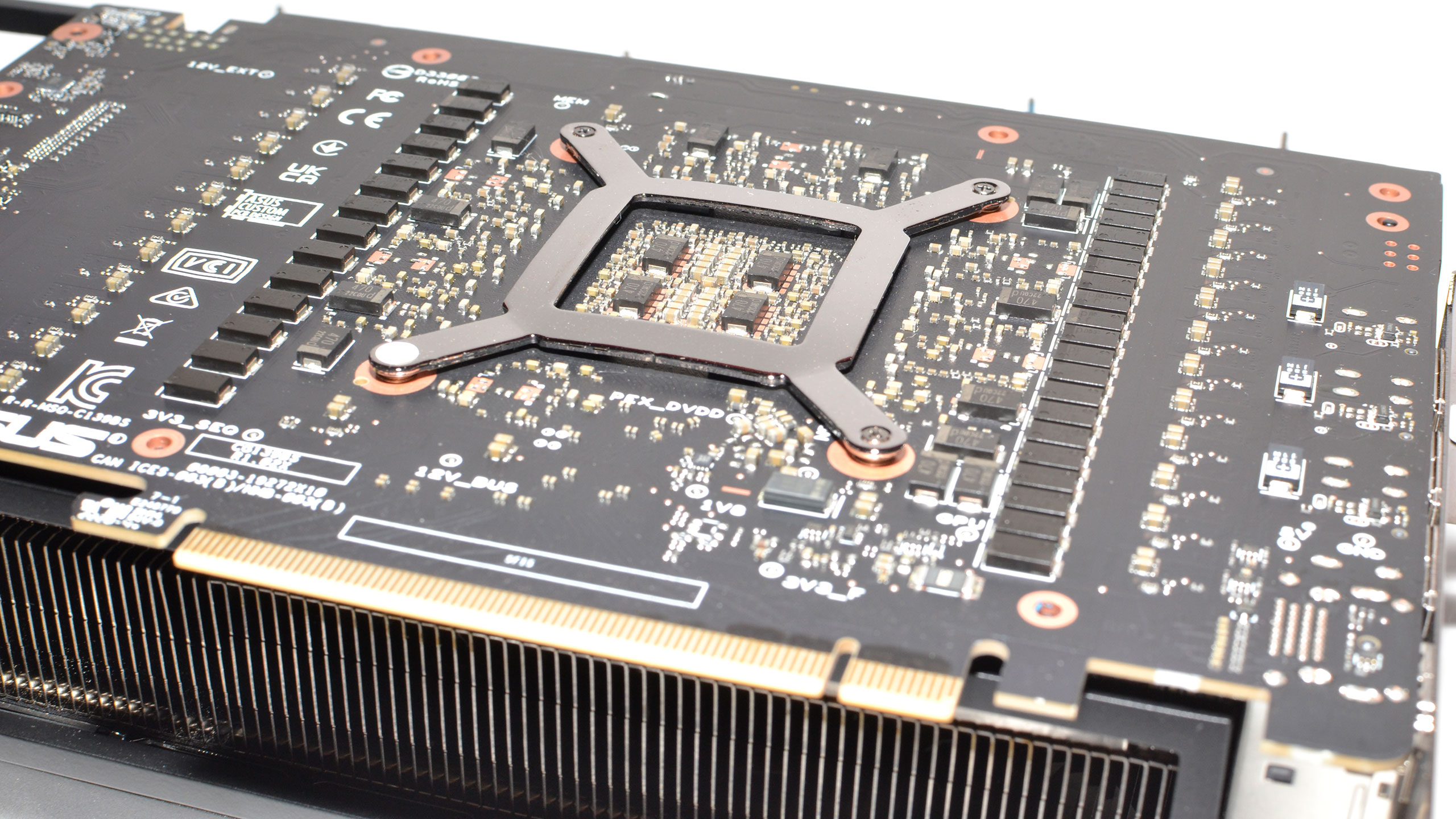

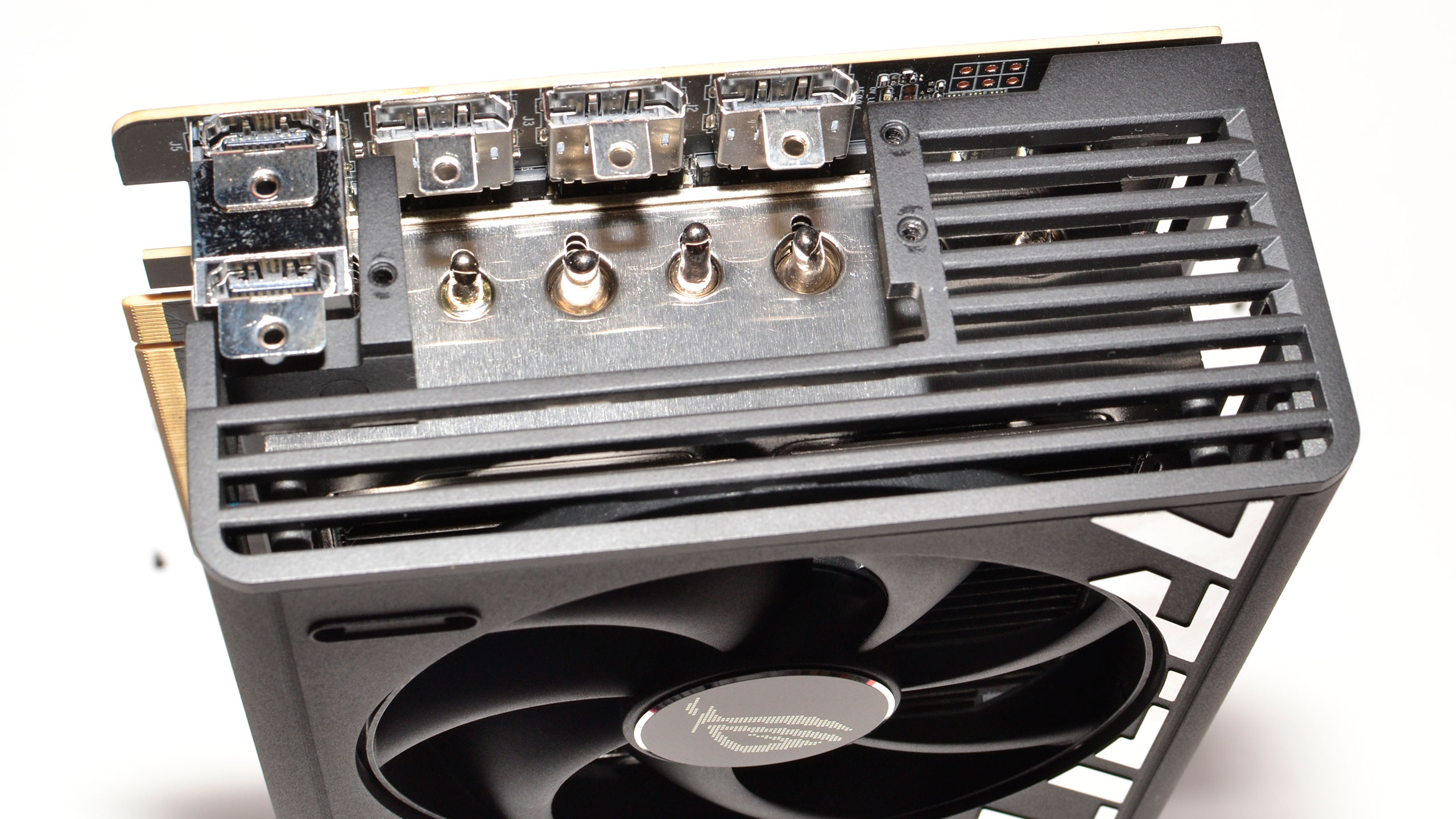

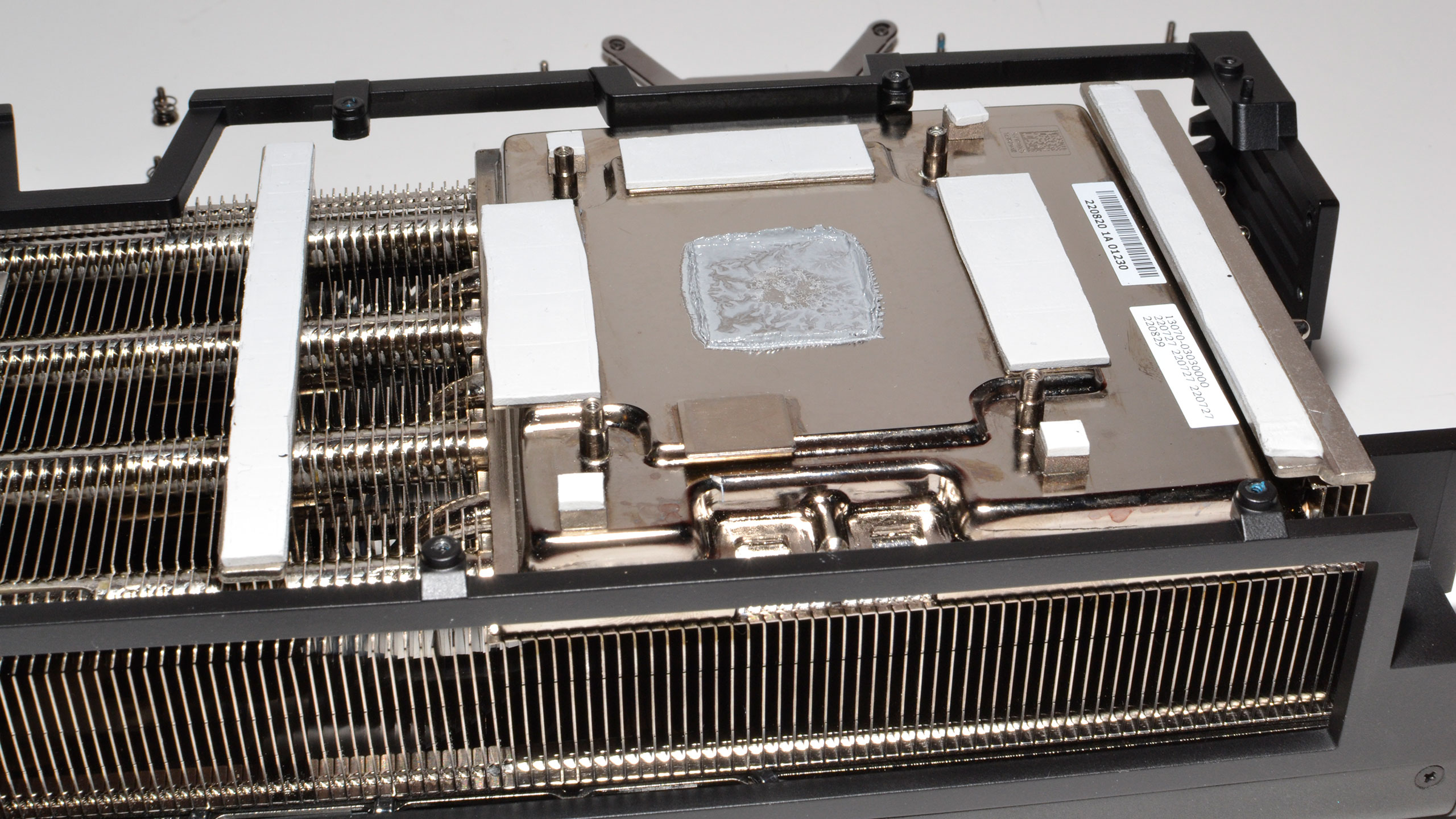
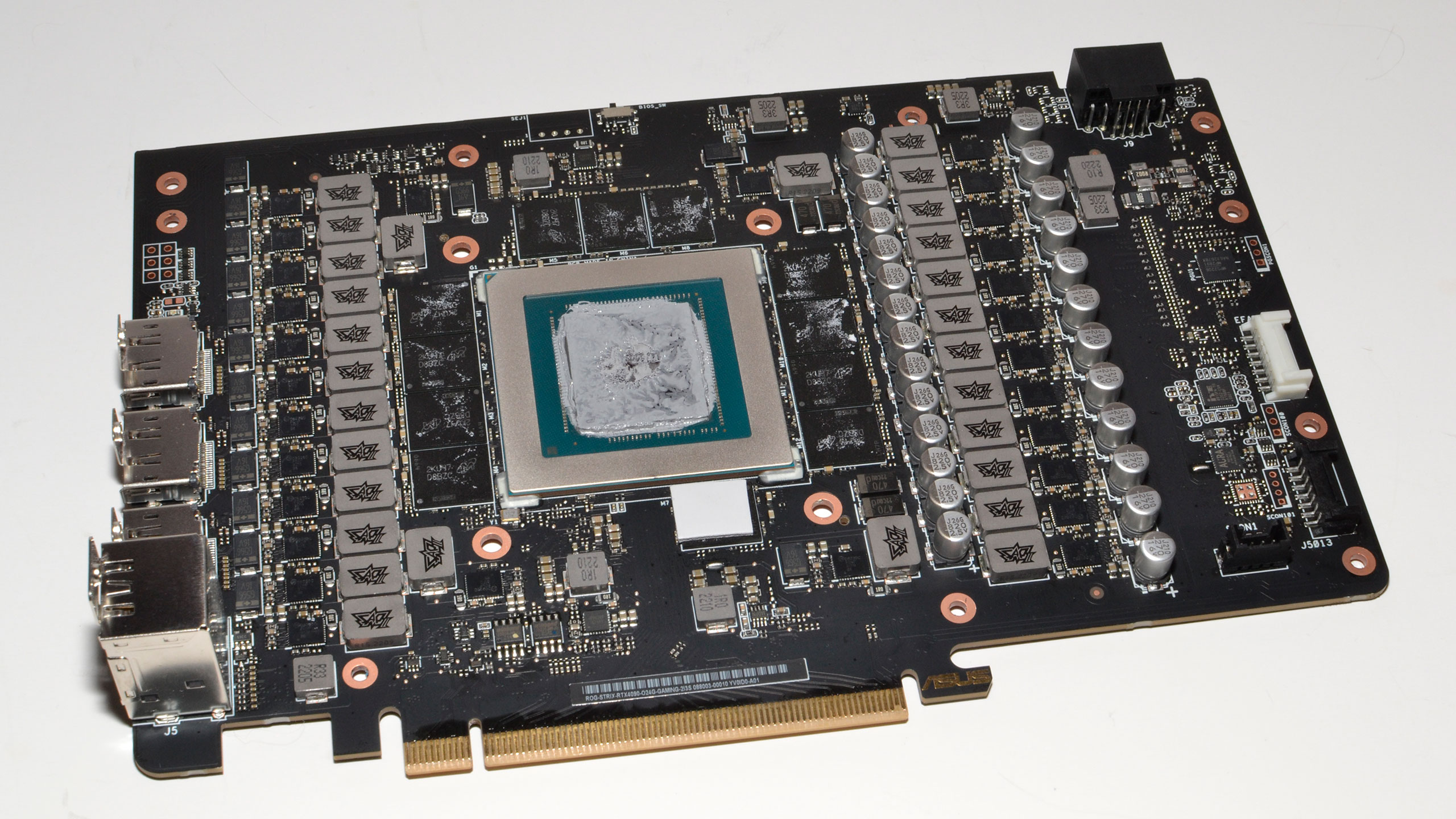
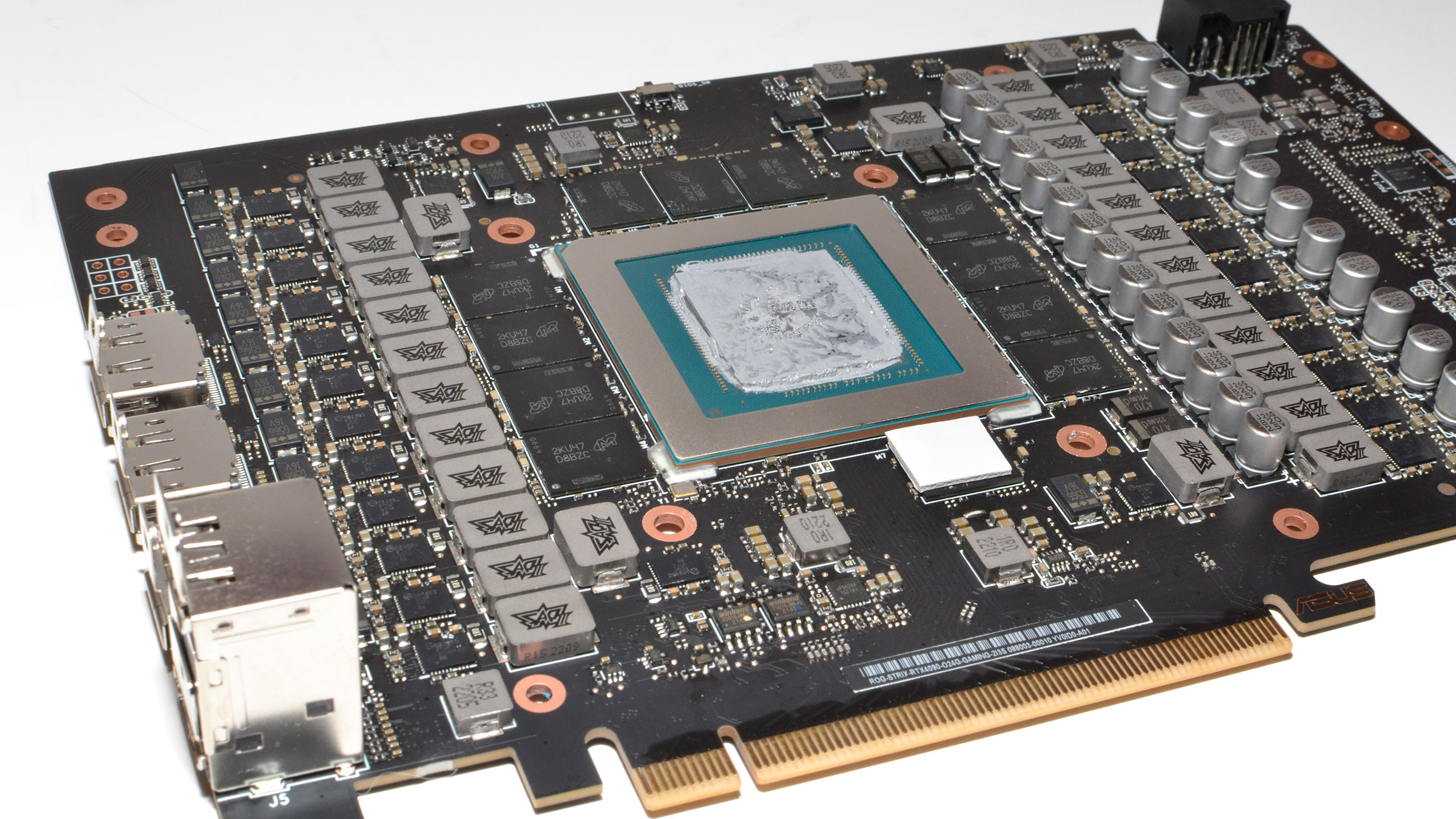
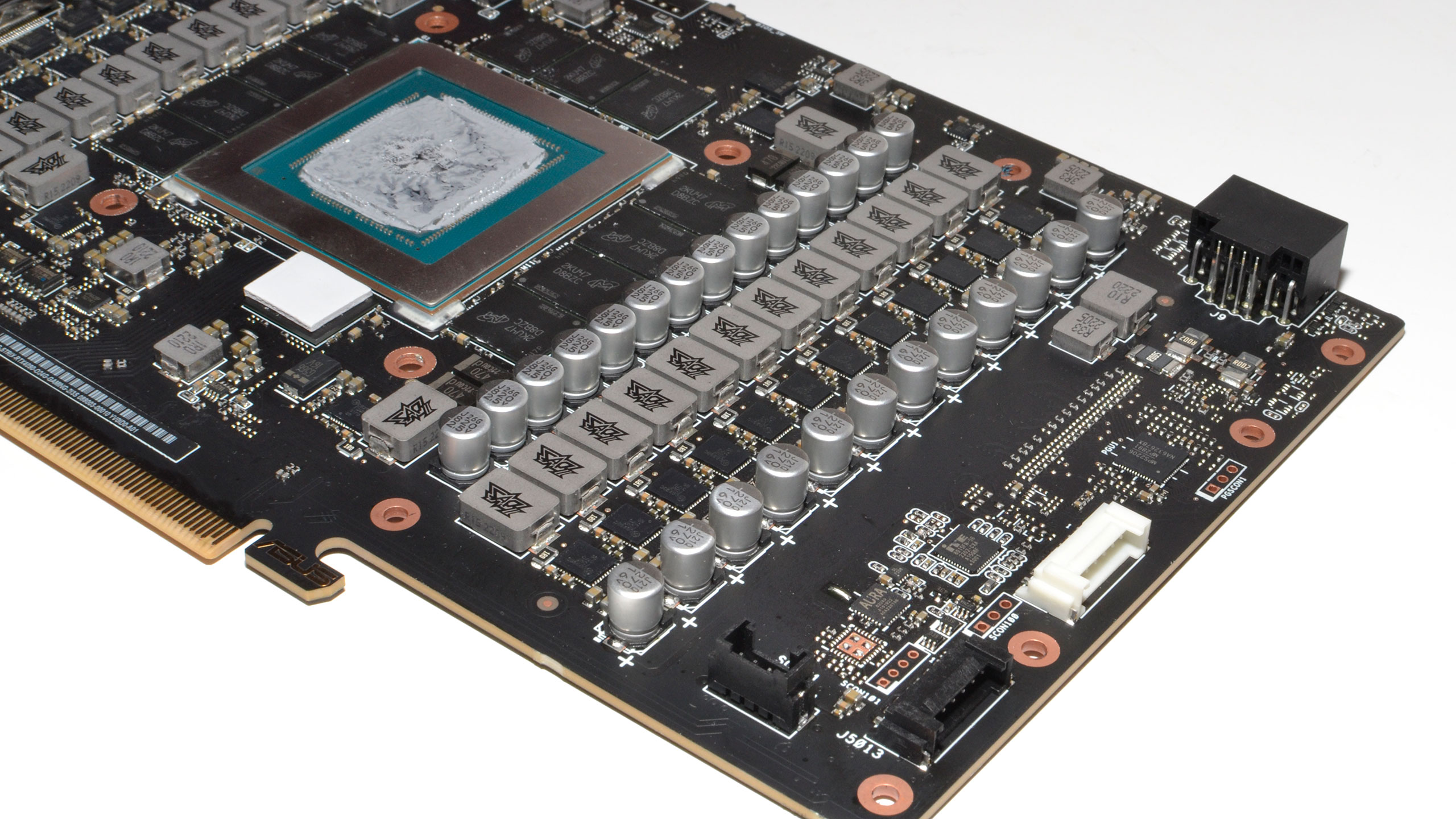
Dismantling the 4090 ROG Strix is a reasonably straightforward process. There are ten Phillips head screws securing the metal backplate, which also adheres to the VRMs underneath. Once that's out of the way, there are four more screws that secure the heatsink to the GPU, and these are designed to be installed using a torque screwdriver to avoid overtightening. You'll also need to remove eight more screws on the IO bracket.
Once all of those screws are removed, a small amount of force should be sufficient to detach the GPU and PCB from the heatsink and cooling shroud. However, there are three cables — two for the fans, one for the RGB lighting — connected near the edge of the PCB, so make sure to disconnect those before fully pulling the PCB away.
One of the main reasons we wanted to disassemble the Asus ROG Strix card was to check the GDDR6X memory. It's labeled "D8BZC," which if you look at Micron's full GDDR6X part catalog corresponds to 21Gbps modules. That's all well and good, except the behavior of these chips leads us to believe that Micron is labeling some 24Gbps (D8BZF) chips as 21Gbps.
Asus RTX 4090 ROG Strix OC Manual Overclocking
We mention the memory in particular as our manual overclocking results were quite impressive, especially on the memory. The 4090 Founders Edition started to have stability issues and artifacting with a +1200 MHz memory overclock (23.4 Gbps effective). The MSI card showed artifacts at just +1000 MHz (23 Gbps effective). But this specific Asus ROG Strix card? We were able to push the memory slider in MSI Afterburner up to the maximum +2000 MHz (25 Gbps effective) and still didn't see any artifacts.
It wasn't fully stable at that setting, as FurMark crashed after a few minutes, but +1750 MHz (24.5 Gbps) ran the FurMark stress test for over 30 minutes without issue. And it wasn't just a matter of appearing stable while also running extremely hot, as HWiNFO64 reported maximum GDDR6X junction temperature of only 64C — just 4C hotter on the memory than at the stock 21Gbps setting.
As for the GPU, we managed a relatively stable +200 MHz in initial testing but eventually had to drop that to +180 MHz as we experienced a bit of instability. Without more voltage (likely via a hardware voltage mod), we couldn't quite get the card to a stable 3.0 GHz, but we did easily break 2.9 GHz.
The Asus ROG Strix let us increase the power limit to 120%. The MSI card limited us to just 110% while the Founders Edition allowed 133%. Given the MSI card supposedly starts at a 480W limit instead of 450W, that potentially gives the Founders Edition the highest power limit of basically 600W (598.5W), the MSI card tops out at 528W, and the Asus card seems to allow up to 540W. It's also possible the Asus card actually has a 480W base limit, which would mean a final limit of 576W.
Note also that we pushed up the fan speed curve quite a bit for this overclock, just to be safe. We set the base fan speed at 50% up to 30C, then a straight ramp in RPMs up to 100% at 70C. We ended up with fan speeds of around 80% during testing, which was not at all quiet, though we likely could have dropped those a bit with further tuning efforts.
- MORE: Best Graphics Cards
- MORE: GPU Benchmarks and Hierarchy
- MORE: All Graphics Content
Get Tom's Hardware's best news and in-depth reviews, straight to your inbox.
Current page: Asus RTX 4090 ROG Strix OC Teardown
Prev Page Features and Specifications Next Page Test Setup for Asus RTX 4090 ROG Strix OC
Jarred Walton is a senior editor at Tom's Hardware focusing on everything GPU. He has been working as a tech journalist since 2004, writing for AnandTech, Maximum PC, and PC Gamer. From the first S3 Virge '3D decelerators' to today's GPUs, Jarred keeps up with all the latest graphics trends and is the one to ask about game performance.
-
-Fran- Thanks for the review, but I hate to say this: you missed the most important thing here...Reply
Can you do a proper workout with this card? How many calories do you burn by just unboxing it and then installing it in a case (when it fits)? Can you hold two at the same time without breaking your back?
Regards :LOL: -
JarredWaltonGPU Reply
I'll be following up with my new "90 Days to a Better You" fitness program.-Fran- said:Thanks for the review, but I hate to say this: you missed the most important thing here...
Can you do a proper workout with this card? How many calories do you burn by just unboxing it and then installing it in a case (when it fits)? Can you hold two at the same time without breaking your back?
Regards :LOL:
I may have already injured my wrist while trying to install the card, though... ;) -
-Fran- Reply
Hell yeah. Most expensive fitness program ever xDJarredWaltonGPU said:I'll be following up with my new "90 Days to a Better You" fitness program.
I may have already injured my wrist while trying to install the card, though... ;)
And I hope your wrist is actually fine. You still have the AIO-cooled one to review, no?
Regards. -
JarredWaltonGPU Reply
Yeah, MSI, Gigabyte, PNY, Colorful, and Galax are still incoming, probably in that order. Maybe a Zotac as well (still waiting for confirmation on that one).-Fran- said:Hell yeah. Most expensive fitness program ever xD
And I hope your wrist is actually fine. You still have the AIO-cooled one to review, no?
Regards. -
Zizo007 No one finds it weird that even big OCs on the core and memory only results in minor performance increase, 5% and less? I looked up many reviews online and they all show the same even for the Gigabyte rtx 4090 OC thats been clocked to 3ghz core and 25.6ghz memory. Thats a 22% OC only on the memory. My strix 2080 Ti benefits a lot more from OC. I wonder if we're CPU limited with an OCed rtx 4090.Reply -
JarredWaltonGPU Reply
The GPU core overclocks are what really matters, and if you do the math, you'll find that even though the reference 4090 Founders Edition claims a boost clock of 2520MHz, in practice it runs at around 2750MHz. Then you overclock to 2950MHz and that represents a 7% increase in clock speed. Given the memory overclocks are much higher — on the Asus card I managed 24.5Gbps vs. 21Gbps stock, so that's a 17% increase — it just means that the large L2 cache and architecture make raw memory bandwidth less of a factor. I suspect even without the memory OC, the 7% increase in GPU clocks will give you a 3-5% boost in performance, meaning the VRAM only accounts for an extra 2% or so.Zizo007 said:No one finds it weird that even big OCs on the core and memory only results in minor performance increase, 5% and less? I looked up many reviews online and they all show the same even for the Gigabyte rtx 4090 OC thats been clocked to 3ghz core and 25.6ghz memory. Thats a 22% OC only on the memory. My strix 2080 Ti benefits a lot more from OC. I wonder if we're CPU limited with an OCed rtx 4090. -
Murissokah The 4090 is a beast, but I can't look at a 4-slot VGA and see at as anything other than bad design. Watercooled solutions are like MSI's make it more palatable, but I'm still not very happy with almost 500W of power and heat. Hoping AMD can come up with something competitive.Reply -
Tenin You mention the 4 screws for securing the heatsink to the GPU needs to be installed using a torque screwdriver to avoid overtightening. Any chance you can share the torque value needed ? Thanks in advance :)Reply -
JarredWaltonGPU Reply
I note that you're supposed to use a torque screwdriver. Honestly: I don't have one. I basically check how 'tight' a screw is before dismantling, and try to get roughly the same level of tightness. In general, just tightening until the screw 'stops' is good enough — don't overtighten or force things.Tenin said:You mention the 4 screws for securing the heatsink to the GPU needs to be installed using a torque screwdriver to avoid overtightening. Any chance you can share the torque value needed ? Thanks in advance :)
